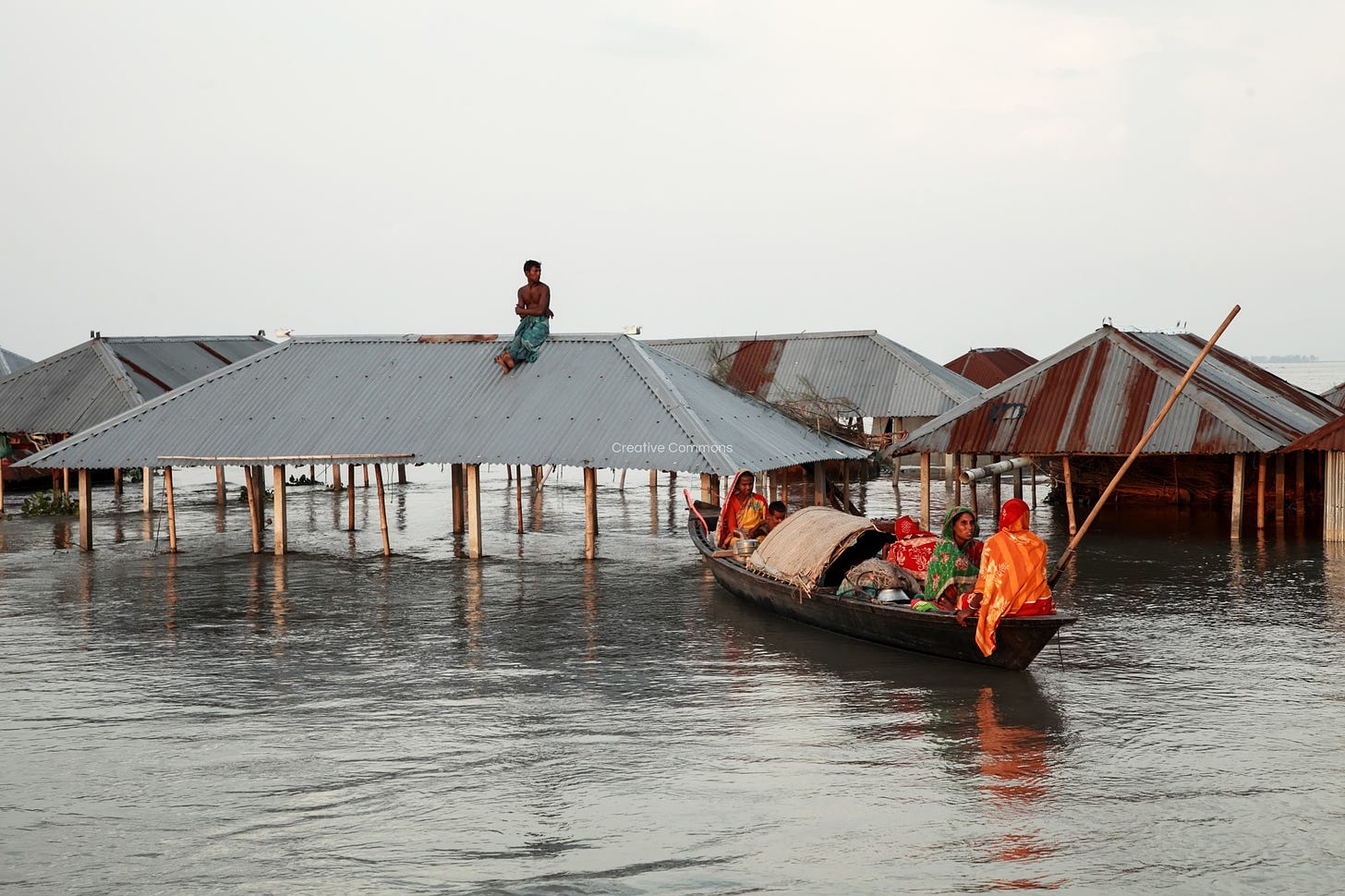
Discover more from Moving climate: a newsletter on migration and climate change
Here's what the new IPCC report says about climate driven migration
Here’s what you need to know about the way today’s IPCC report handles the issue of migration.
If you don't want to read the whole thing, here's the tl;dr: The IPCC believes that climate holds the power to reshape migration. Migration could be a viable way for people to adapt if their rights are protected. But that isn’t coming through in the Summary for Policymakers - which often sets the political agenda.
First up, what the IPCC is releasing today is a synthesis (or mash-up to use the technical term) of a series of previous reports. It draws insights from each of the reports together. This includes a lot of interesting work on migration.
This report contains the key "Summary for Policymakers". The report itself is written by experts. But the Summary has to be agreed by governments. The summary often sets the political agenda. In the past, it's been a political battleground.
The IPCC’s take on migration and displacement linked to climate change has shifted significantly over the last decade as the evidence has grown. So the interesting questions on migration are:
(1) How has the IPCC’s handling of migration changed over the years? and
(2) Which of those insights have made it into the Summary for Policymakers?
First up - how has the IPCC’s handling of migration shifted over the years? The IPCC’s most recent snapshots of the evidence on climate and migration took place in 2014 and 2022. At each point, they pulled together the known research on the topic.
Back in 2014, the IPCC concluded that there was evidence pointing towards a relationship between climate and migration. However, they emphasised the complexity of the connection and the importance of non-climate factors in driving human movement. The report says that the key thing is to further understand the complex relationship between climate impacts and human movement. They acknowledge the link but emphasise that there’s a lot we don’t understand about it.
Fast forward to 2022, and the picture is very different. The IPCC has taken a new snapshot of the available evidence and updated its findings. In the intervening years, a lot of new research has been done, and climate impacts have accelerated. The IPCC is now much more confident about the connections between climate and migration. They still rightly point to the complexity of the relationship. But they are now much more certain that climate is playing a key role in altering patterns of migration.
The second big step forward is that the 2022 report recognises the role of migration as a form of climate change adaptation. In the years between 2014 and 2022, a lot of new evidence emerged about this.
Strong evidence points to the fact that people are already using migration as a way of adapting to climate change. Lots of research showed that migration could potentially become a viable way for some people to adapt. The 2022 report rightly reflects this shift.
The next big shift between the reports is the focus on the welfare and rights of migrants. Because the 2022 report is highlighting the fact that people are already moving as a way of adapting, it also highlights the welfare and rights implications of this.This was an incredibly important shift. The IPCC provides the gold standard of evidence when it comes to climate change. The IPPC’s shift created a shake up of the whole debate about climate change and migration.
So this is the direction of travel in IPCC reports: more certainty about the links, more focus on migration as a form of climate adaptation, new focus on what that means for the health, wellbeing and rights of people on the move.
Remember that this isn’t because the IPCC have "changed their mind". Their role is to assess the available evidence. The assessment has changed because the evidence base on climate-driven migration has grown.
So that’s the history. How much of the IPCC’s current assessment of migration has made it into the Summary for Policymakers? Remember, it's the Summary document that often sets the political agenda. The summary also has to be agreed by governments.
The new levels of certainty are there. The Summary recognizes that there is now high confidence that weather extremes exacerbated by climate change are driving new patterns of human movement - especially forced displacement. However, many of the insights about migration as adaptation are missing. While these are included in the main report from 2022, they’re missing from the summary.
The main 2022 report takes a nuanced position. Migration can be a form of adaptation. But obviously, not all climate-driven movements should be seen as adaptation. Some of it - especially forced displacement - is not adaptation. But the Summary doc only states one side of this equation. The only time the words "migration" and "adaptation" appear near each other is to state that migration should not always be thought of as a form of adaptation.
The idea of migration as a form of adaptation is difficult for some governments to stomach. It’s one of the more politically contentious findings of the 2022 report. Perhaps we shouldn’t be surprised that it didn’t make it into the Summary for Policymakers that has to be agreed by governments. We can imagine that many would have been reluctant to provide a platform for the idea that facilitating people to migrate could be a way of adapting to climate change.
Subscribe to Moving climate: a newsletter on migration and climate change
Climate change holds the power to reshape patterns of migration and displacement. This is a newsletter about what that means.



